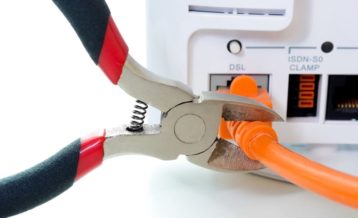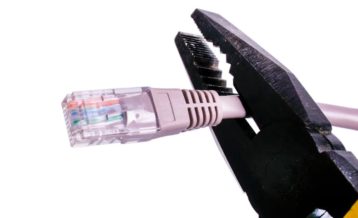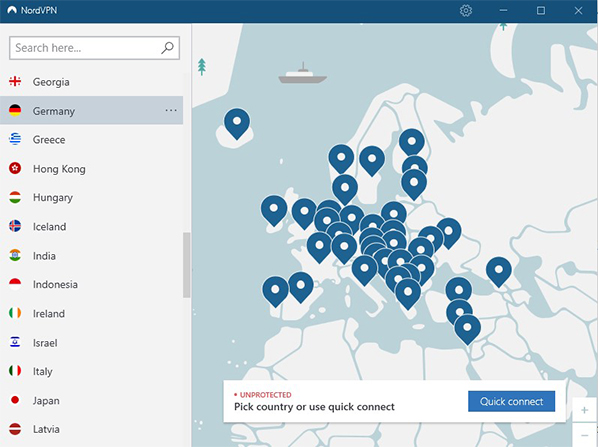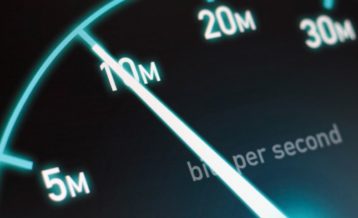In this guide, we’ll talk about how you can stop internet throttling.
To stop internet throttling you’ll first need to confirm that your internet is being throttled meaning that internet service provider is engaged in bandwidth throttling to reduce your internet speeds.
By the time you read the last section of this guide, you’ll be free from internet throttling and have everything you need to be able to binge watch to your heart’s content.
What you need to understand is that mobile networks and internet service providers are going to ramp up the throttling operations they use to throttle their users’ bandwidth, using excuses like network congestion due to a large number of customers to justify it.
Of course, that doesn’t mean that the average gamer or Netflix binger has to be content with lower speeds and fewer downloads.
All it means is that you have to fight back harder and the way you can do that is by testing. You need to test your internet connection then check if your ISP is actually limiting your internet connection. Once you’ve established that your ISP is doing something nefarious with your connection, you need to take action.
We’ll talk more about how to do this in the next couple of sections.
Table of Contents
What is Internet Throttling?
Simply put, ISP throttling is what happens when an ISP limits the bandwidth of a user’s internet connection.
Most of the time, ISPs do this once the user has consumed a preset amount of data known as the monthly data limit. However, we’ve seen cases where ISPs throttle a connection not because the user is consuming too much data but because they want to slow down specific websites and services.
You may think that this is a rare occurrence, but it’s not. People in the industry consider it part of the business.
Internet providers are able to charge their customers a lot less if they can cap bandwidth they use. In this way, ISPs can also ensure that their network stays free of congestion. While this is the reason that many ISPs throttle internet connections, others are doing it for more dishonest reasons.
These ISPs want to make more money by raking it in from websites and services to which they slow down the connection.
Popular sites like Hulu and Netflix are often subject to throttling meaning that users have slower connections to these sites than they do to others. Internet providers can force these websites to pay them more money if they want consumers to have a fast connection while accessing their site.
Of course, internet throttling doesn’t have to mean the end of HD streaming.
You can learn to use a couple of tools that will have you watching the latest episodes of your favorite shows on Netflix or watching gaming streams on Twitch, with no throttling. We’ll show you how to use these tools later in this guide.
To reverse this situation, you need to learn how to turn the tables against your internet provider. To do that, the best course of action is to get a copy of your contract with your ISP and read it thoroughly to get an idea of what you should be getting from your service.
We know contracts are no fun to read, but you have to read them if you don’t want to end up in a situation where your internet service provider messes up your internet connection and is held blameless in the eyes of the law.
An example that comes to mind is telecommunication companies that offer unlimited internet plans to their customers without telling them that they won’t be able to watch some videos at full resolution as per the contract.
Most of the time consumers can’t stream anything above 480p once they hit the data cap for the billing period. This is what most other ISPs do as well. On that note, this is also one of the reasons that your internet service starts to feel sluggish when the end of the month approaches.
Stop ISP Throttling by Talking to Your Internet Provider
To prevent data throttling you’ll have to gather some data. We understand that the prospect of talking to your internet provider about internet throttling seems awful, but the situation is not as helpless as it may seem. In fact, there are some things you can do to improve your chances of getting rid of internet throttling.
Note:
The best to do to figure out if your internet provider is throttling your connection is to keep a log.A simple piece of paper will work. On the paper, record the times when you feel like your movies are taking unreasonably lengths of time to buffer. You should also record any other time that your internet feels slow. Along with each recording you need to measure and make note of your internet speed.
You can do this using a tool like Security Gladiators Speed Test Tool which will give you your download and upload speeds as well as your ping value. Record all of these numbers with each entry on your log.
After you’ve written down these values, go to the Results History page on SpeedTest. Once there you should be able to see a graph that shows you the speed of your internet connection and how it’s changed over time. It will also show the different lows and highs of your connection.
The site provides the ability to export this graph and its data. You can download it, examine it and then have it with you along with your paper log to provide evidence when you confront your internet provider about throttling your connection.
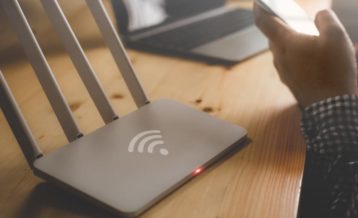
This service provides you with a bunch of information that can come in handy once you contact your ISP. With this testing service, Google can identify your ISP and do a bit of analyzing to provide you with yesterday’s video quality throughout the day. You can then use that information to know if your ISP is throttling your internet connection or not.
Both of the services we discussed with be helpful in your quest to get to the bottom of your internet problems.
Both generate a graph for you that allows you to get an overall feel of your connection quality. Google uses different metrics for its graphs than SpeedTest, but they’re both useful. Instead of upload and download speeds, Google uses HD, Standard and Low definition video quality as a measure of how good a user’s connection is. It doesn’t do a direct speed test.
Another useful feature of the Google Video Quality Report is that it generates a list of internet service providers that it thinks may offer the user a faster connection at a lower price. The only problem we found with the service was its default setting to consider 720p as HD.
While technically, 720p is HD there’s no doubt that the average consumer wants 1080p video or better. They might not see Google’s service as a useful tool to make the best possible case against bandwidth throttling, but it can be just as helpful as a speed test.
To use it, go to the site and click on the button that says Start the Test. Once you do that, the tool will run five bandwidth tests in a short time. After the tests are done, the website will show you a number it calls the overall bandwidth number.
This bandwidth number is a fairly accurate representation of the speed of your connection at the moment you ran the speed test. Below the overall bandwidth number will be the results of each individual speed test.
The obvious question that arises from all this is: what should you do with all these numbers?
Well, the tools we’ve discussed should give you more than enough material to know if your ISP is throttling your internet connection.Once you know that, you should prepare to get in touch with your ISP and let them know what’s going on.
It never hurts to let your ISP know that you’re aware that they’ve throttled your connection. Of course, before doing that you should give some thought as to whether or not it’s fair that they’re throttling your internet with regard to the contract you have with them.
To reach your internet provider you can email them, call them or go to their office. We should remind you that the strongest part of your case should be all the data that you’ve collected using the tools that we mentioned. That’s the best way of proving your case.
If your ISP knows that they’re at fault they may provide compensation in the form of an upgraded package with no extra charges or something similar. It’s also possible that your ISP will reject your case. In that case, you need to head to our next section.
Generally speaking, if you tell your ISP that your internet speed is slower than usual, the employees will give you the benefit of the doubt if you’re a long time user and haven’t caused problems in the past.
You also have to take into account whether or not your contract with your ISP allows them to throttle your connection.
If that’s the case then things will get complicated but hope is not lost. There are still some things you can do, the first of which is to upgrade your connection package.
Preferably, you should purchase a package that doesn’t have any bandwidth or data caps. Be prepared to pay a bit more for the same speed with a package of this nature.
One thing that’s helped in our experience is to simply tell your ISP that their service is not good enough anymore. Tell them that you want to move to another ISP. Once you do that, there’s a high probability that they’ll take your complaint seriously.
If all of your efforts up to this point have failed, keep reading to see what you can do to improve your situation.
Top Ways to Fix ISP Throttling
- Switch to a better package (preferably with no data caps and faster speeds)
- Use a good VPN provider (more on this in the next section)
- Talk to your government representatives (representatives and/or the FCC)
- Change your ISP
- Use a proxy server (not recommended because your ISP can bypass it)
Use a VPN Service to Eradicate Data Throttling
The great thing about an open and free internet is that you have access to tools that you can use to maintain your rights.
More specifically, if you find that your ISP isn’t ready to give in or grant you any concessions then you should use a virtual private network or VPN.
Note:
VPN services are the best and the cheapest when it comes to performing tasks like hiding your IP address and changing your location.They’re also very accomplished at protecting your data from everyone including your internet provider.
The way internet throttling works is that your internet provider takes a look at the services that you access and use.
Then, based on its policies, it clamps down on users who use data-hungry services. This results in slower streaming speeds on sites like Netflix and YouTube. With a VPN things change and you no longer have to worry about data throttling bringing your data transfer speeds almost to a halt.
VPNs are able to hide your online activity. When your ISP can’t access your data, it has no way of knowing what you’re doing on the internet.
If it doesn’t know what you’re doing then there’s no way for it to penalize you for your internet activities. VPN services create ultra-secure encrypted connections with a network of services that you use without ever leaking your IP address or physical location.
Can I Use a Free VPN to Stop Throttling?
We’re aware that there are free VPNs that claim to do just as good a job as any paid VPN. So why shouldn’t you just sign up for a free VPN?
There are many reasons why you shouldn’t use a free VPN, the first of which is that the vast majority of them have data restrictions. If you have data restrictions, how are you going to make sure that your connection is still hidden while you’re watching a movie?
They allow you to transfer an unlimited amount of data, which is the major advantage they have over free VPNs. Keep in mind that when it comes to VPN services, the more honey you put in, the sweeter the pot gets. Using a free VPN will have you spending a good chunk of time complaining to the customer support department, if they even have one.
Also if you’re using a VPN to fix an already slow connection, you can imagine how this would affect not only your streaming habits but also general web browsing. Free VPN services are slow and they don’t do much to protect your privacy.
You want your VPN service to solve the problem of internet throttling every time that you turn it on. Free VPNs don’t do that. They’re very inconsistent and unreliable which makes sense because in order to provide reliability and consistency a VPN provider has to purchase quality equipment and hire quality employees.
How is a free VPN going to manage all of this when it doesn’t have a revenue generation model?
When everything is said and done, you should go for a VPN service that will deliver the results every single time you use it.
You also want your VPN service to have fast servers so you don’t have to go through your favorite movies and TV series with buffering issues. The same holds true if you plan on playing online video games or just using the internet in general.
How to Use a VPN to Bypass ISP Throttling
1. Go to the website of your chosen VPN service and sign up for a package that suits your needs.
2. Download the VPN app for your system from the website.
3. Use your credentials to launch the VPN app and sign in.
4. Connect to a VPN server that’s located near your actual location for minimum speed loss. Then hit the button that says Connect. Keep in mind that some VPNs will just have buttons with only an icon.
5. Congratulations! You’re now successfully using a VPN service to get rid of internet throttling.
Other Reasons You May Be Experiencing Throttled Internet
1. You have outdated software on your router and/or modem. That can mimic symptoms of data throttling.
2. Your modem and router are old. That can also give a feeling of data throttling.
3. You usually work during hours that your internet provider has marked as high traffic. This is definitely a top reason for feeling like your provider is throttling your bandwidth.
4. You always use WiFi. While not exactly a primary reason for giving that throttling feeling, it can still reduce download speeds and make it appear as though you have slow internet.
Solutions to These Problems
1. Restart your modem and router.
2. Use an Ethernet connection instead of WiFi.
3. Check internet speed on another device to make sure that your machine isn’t the problem.
4. Make sure your internet provider isn’t having technical difficulties. You can do that by calling them or checking their website or social media.
5. Rid your machine of any viruses.
Conclusion: How to Stop ISP Throttling
Most internet service providers engage in some form of throttling in the U.S. The most common ways to tell if your ISP is throttling is network congestion, slow internet or lack of high internet speeds while you’re torrenting, playing video games, watching Netflix or doing any other high bandwidth activities.
The best way to fix internet throttling is to either talk to your internet service provider or sign up for a VPN service.
If you decided to talk to your internet provider, be sure to have the data from the ISP throttling test to provide evidence for your claims. They’ll be more likely to listen to you if you can prove that they’re throttling your internet.
If you decide to go with a VPN, you may notice a slight decrease in your internet speed due to the nature of a VPN, but it should be minor relative to the speed reductions you noticed while your ISP was throttling your internet.
FAQs
Also, make sure it has a kill switch feature. This feature will drop your connection if the link to the VPN server is lost, keeping you from accidentally accessing the internet without the protection of a VPN.


